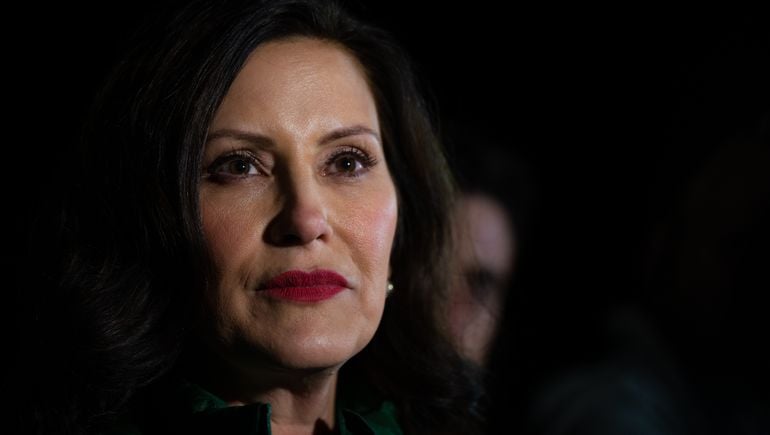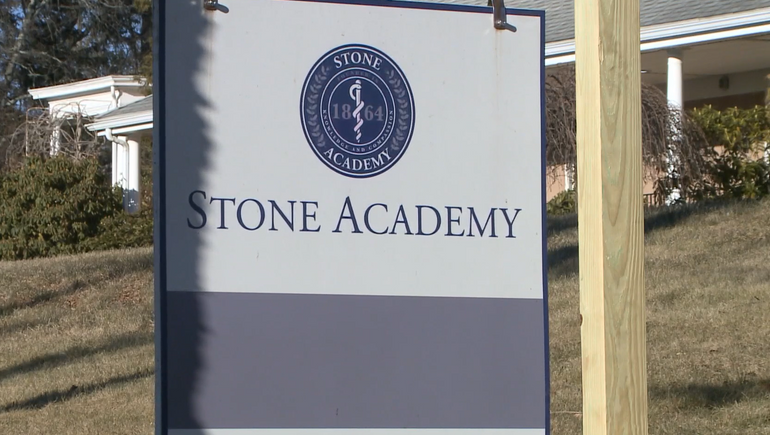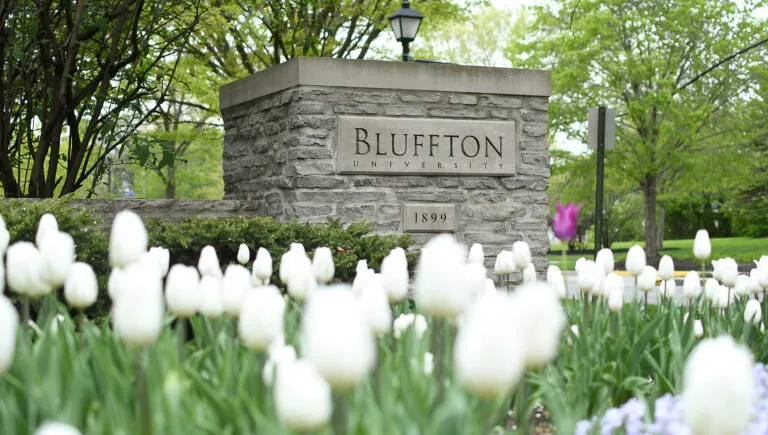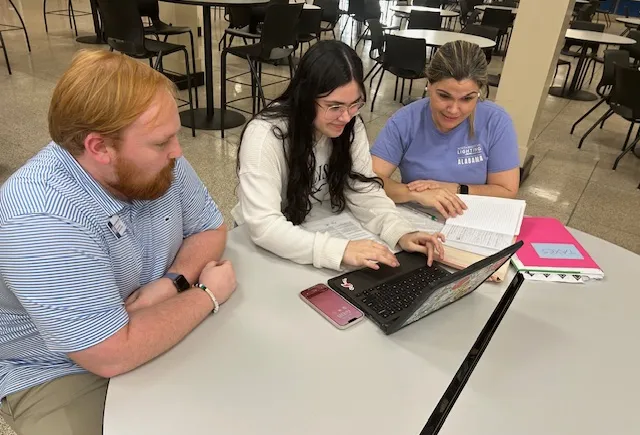[ad_1]
In 2021, Vermont launched a new free college program, the 802 Opportunity grant. The program offered free tuition at the Community College of Vermont for students from families with an annual household income under $50,000.
In the first year, 2,000 students used the scholarship to pay for college. That number increased 10% the next year. Most were first in their families to go to college.
In other words, the program has been successful, said Joyce Judy, president of CCV. Vermont, she said, has good high school graduation rates but low college-going rates. The latter are not helped by high community college tuition — CCV charges $280 per credit for in-state students.
Legislators too seem to think the initiative is going well. Last year, they voted to expand eligibility for the scholarship, which now covers those with incomes up to $75,000, or half of all Vermonters, Judy said.
“We have so many Vermont companies who are in desperate need of highly skilled employees, and we want to make sure Vermonters can get those jobs,” Judy said. “Since COVID came, there’s been this recognition that if we’re going to help all Vermonters operate to their full potential, we really have to figure out how to make it affordable to them.”
It’s a trend happening across the nation. After the defeat of President Joe Biden’s nationwide free community college plan a year ago, some momentum for the idea moved to the state level. Now, more states are jump-starting their own programs, and ones that launched last year are looking at potential expansions.
A movement with momentum
Take the Michigan Reconnect program. Established by Gov. Gretchen Whitmer in 2021, Reconnect has offered free community college tuition for adults 25 and older with no college credentials. Now, Whitmer has said she would like to lower the age of eligibility to 21.
“It has opened the door to opportunity for so many working-age adults and we’re even more excited about the possibility of it expanding,” said Brandy Johnson, president of the Michigan Community College Association. “We’ve seen more adult students enroll in our institutions and we think the ‘tuition-free pathway’ tagline has made a difference in helping adults see that these programs are where they belong.”
Connecticut already has a free college program, called Pledge to Advance Connecticut, or PACT, that applies to first-time community college students taking at least six credits. But the president of the state’s college and university system has proposed expanding it to all community college students.
In states that don’t have comprehensive free college programs, governors have indicated they are interested. In Massachusetts, newly inaugurated Gov. Maura Healey ran on the idea of MassReconnect, an initiative to mirror Michigan’s and Tennessee’s programs for community college adults. Other Massachusetts lawmakers have proposed their own plans for a free program.
“We are having many conversations about what we would like for free community college in Massachusetts and the things that would need to be attained to make it sustainable for our schools and our students,” said Sarah Yunits, deputy executive director of the Massachusetts Association of Community Colleges.
In Illinois, Gov. J.B. Pritzker called for free college tuition for some families in his recent State of the State address, though he has proposed no formal plans.
Federal officials have emphasized the expansion and growth of free programs at the state level. Nasser Paydar, who serves as the assistant secretary of postsecondary education at the U.S. Department of Education, called on states to work on tuition-free community college at a recent conference.
A powerful word: free
Despite growth in recent years, free college programs have been part of the education landscape in some form for a while, starting with merit-based programs in the 1990s, said Michelle Miller-Adams, senior researcher at the W.E. Upjohn Institute for Employment Research.
Local free college programs based in cities followed in the mid-2000s, with the first statewide program then launching in Tennessee in 2014.
“Anytime that federal leadership dies out, you see continued activity at the state and local level around tuition-free college, and that’s been going on almost 20 years now,” said Miller-Adams. “The spotlight shifts.”
While they may move in tandem, different state governments frequently give varying rationales for promoting free college. Rhetoric might center around affordability and freedom from debt — as did a widely covered proposal from Sen. Bernie Sanders. But it may also focus on equity regarding who is going to college, or workforce development, Miller-Adams said.
Though free community college largely draws bipartisan support, legislators may have different reasons for supporting a proposal, depending on the state, said Ryan Morgan, CEO of the Campaign for Free College Tuition, an advocacy group. For example, some southern states need skilled workers to fill manufacturing jobs, and will turn focus to workforce development.
“What I would like to see is design choices that match the goals.”

Michelle Miller-Adams
Senior researcher, W.E. Upjohn Institute for Employment Research
Lawmakers may be encouraged by some of the research behind free college programs. Doug Harris, chair of economics at Tulane University has studied free college. Harris said his research shows that such programs largely pass cost-benefit analyses.
Though they also increase college-going generally, what that looks like can depend on the situation, Harris said. In some cases a free program for two-year colleges could shift enrollment away from four-year institutions.
The Tennessee Promise program, started in 2014, boosted enrollment only in the short term, Miller-Adams said.
More recently, New Mexico last year started the nation’s most far-reaching free college program, which applies to community colleges and state four-year universities. The state saw public college enrollment rise 4% this past fall.
In Maine, the state government has offered free tuition at community colleges for students whose high school terms were affected by the pandemic. Andrew Morong, associate dean of enrollment management at Central Maine Community College, said enrollment has increased by more than 12% since fall 2021, although the college has also done other things to boost its headcount, such as adding new sports teams and transfer agreements.
“The word ‘free’ is so powerful,” Morong said.
“A lot of students who ended up qualifying for the Pell Grant and the Maine State Grant would have come to Central Maine Community College for free anyway, they just didn’t know it yet,” Morong said. “It attracted a lot of people who may not have realized it was going to be free for them anyway and created a lot of aspiration for them.”
“It attracted a lot of people who may not have realized it was going to be free for them anyway.”

Andrew Morong
Associate dean, enrollment management, Central Maine Community College
Almost all of the state-level programs, except for New Mexico’s, are last-dollar scholarships, meaning that they only kick in after federal Pell Grants and other aid has been used up. Miller-Adams said she would like to see more “first-dollar” programs so students who already qualify for Pell Grants can use federal funds to cover their other needs like education supplies and housing costs while enrolled in college. She would also like to see more intentional program design.
“What I would like to see is design choices that match the goals,” she said. “Because these are political animals, they tend to get politically tweaked in ways that are not always good examples of program design.”
For instance, Maryland’s free community college initiative has a high school GPA requirement of 2.3. The choice of that number seems to be largely arbitrary, Miller-Adams said. New York’s program for two- and four-year colleges includes a strict post-graduation residency requirement.
Some current programs were billed as time-limited, such as Maine’s, often because they were tied to one-time federal funds as a result of the pandemic. But state legislators appear to have some appetite for extending or expanding those programs. Maine’s was originally set to end with the high school class of 2023, but the governor’s executive budget has proposed extending funding for the classes of 2024 and 2025, Morong said.
For Ryan, of the Campaign for Free College Tuition, the growth in programs proves that they are achieving their goals. Nine years ago, there were less than a handful of statewide programs, he said. Now there are 31.
“That fact tells me that it’s working,” Ryan said.
[ad_2]
Source link









